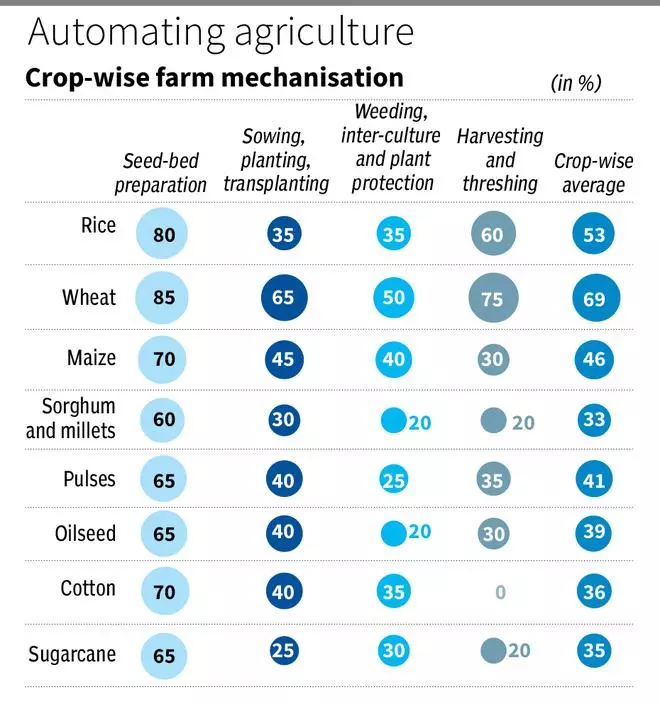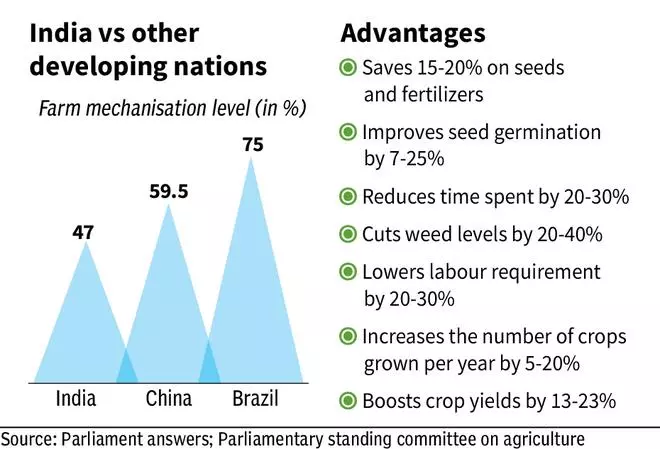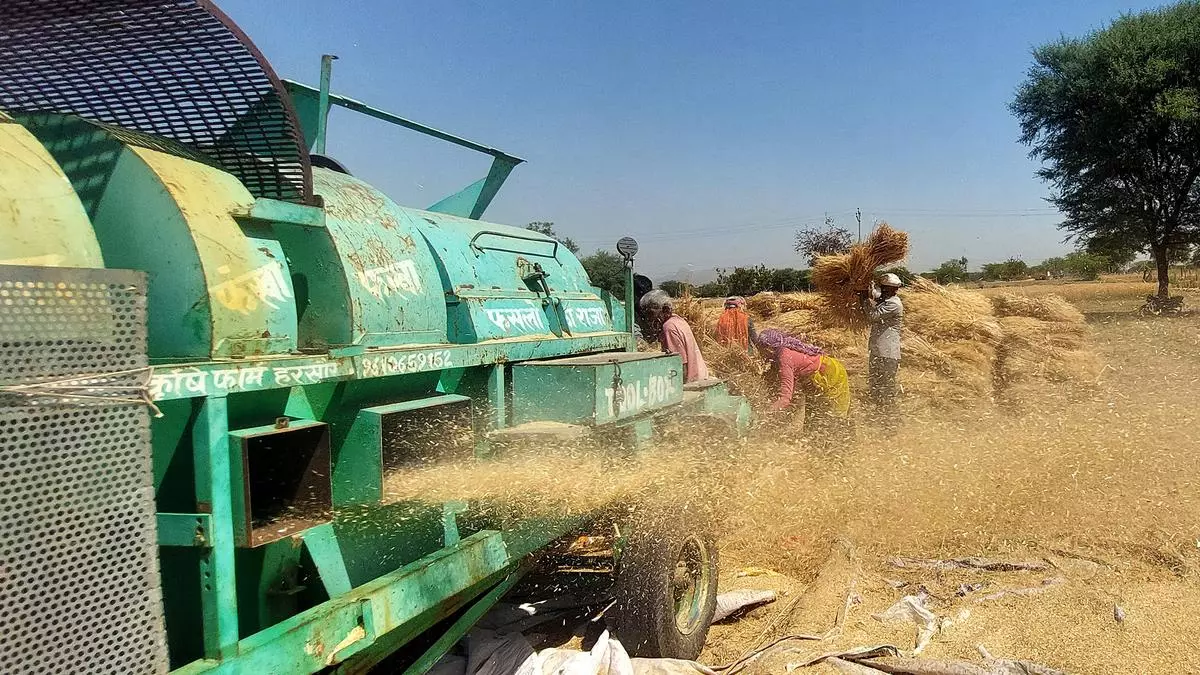Agri sector that feeds 140 crore is yet to reach 50% mechanisation
Indian farming sector, which feeds more than 140 crore population, is yet to reach the 50 per cent mark in overall mechanisation, if the available data on some major crops are any indication. Recent replies in Parliament showed that the overall average mechanisation level for crops such as rice, wheat, maize, sorghum and millets, pulses, oilseeds, cotton and sugarcane stands at 47 per cent.
The operation-wise average mechanisation levels across crops are: 70 per cent for seed-bed preparation; 40 per cent for sowing, planting, transplanting; 32 per cent for weeding and inter-culture; and 34 per cent for harvesting and threshing, resulting in an overall average mechanisation level of 47 per cent.
Among crops, only wheat (69 per cent) and rice (53 per cent) have achieved more than 50 per cent mechanisation. Overall mechanisation levels for other crops are: maize at 46 per cent, pulses at 41 per cent, oilseeds at 39 per cent, cotton at 36 per cent and sugarcane at 35 per cent. In the case of sorghum and millets, it is at 33 per cent.

Seed-bed preparation is one of the most mechanised processes for various crops. The level of mechanisation in this process ranges from 85 per cent in wheat to 60 per cent in sorghum and millets. It is 80 per cent for rice, 70 per cent for maize and cotton and 65 per cent for pulses, oilseeds and sugarcane.
The Agriculture Ministry’s replies in Parliament mentioned that the adoption of mechanisation by farmers of various States depends on varying factors such as socio-economic conditions, geographical conditions, crops grown, irrigation facilities, etc.
A parliamentary standing committee report titled ‘Research and development in farm mechanisation for small and marginal farmers in the country’, which was submitted in both houses of Parliament in July 2023, noted that the overall agriculture mechanisation level of the country is comparatively lower than that of other developing countries such as China (59.5 per cent) and Brazil (75 per cent).

Benefits of mechanisation
Highlighting the benefits of farm mechanisation, the parliamentary standing committee report said farmers save 15-20 per cent on seeds and fertilizers. Mechanisation leads to 7-25 per cent improvement in germination of seeds and saves 20-30 per cent of farmers’ time.
Noting that 86 per cent of farmers in the country have land holdings less than 2 hectares, the standing committee said unless machines appropriate for small holdings are made available or substantial farm amalgamation takes place, it is difficult for the small and marginal farmers to purchase their own machinery. It stressed the need for the development of farm machinery for such farmers, and such implements should be further incentivised.
However, the government officials estimate that it will take another 25 years to reach 75-80 per cent mechanisation. To a question by the parliamentary standing committee, the Department of Agricultural Research and Education said, “It is expected that another 25 years are required to achieve the level of 75-80 per cent mechanisation from the present level of 47 per cent.”
It is to be noted here that the government launched a Sub Mission on Agricultural Mechanization in 2014-15 to promote an inclusive growth of farm mechanisation in the country. Under the scheme, assistance is given to State governments for providing training and demonstration of agricultural machinery and assist farmers in procurement of various agricultural machinery and equipment as also for setting up of custom hiring centres.
